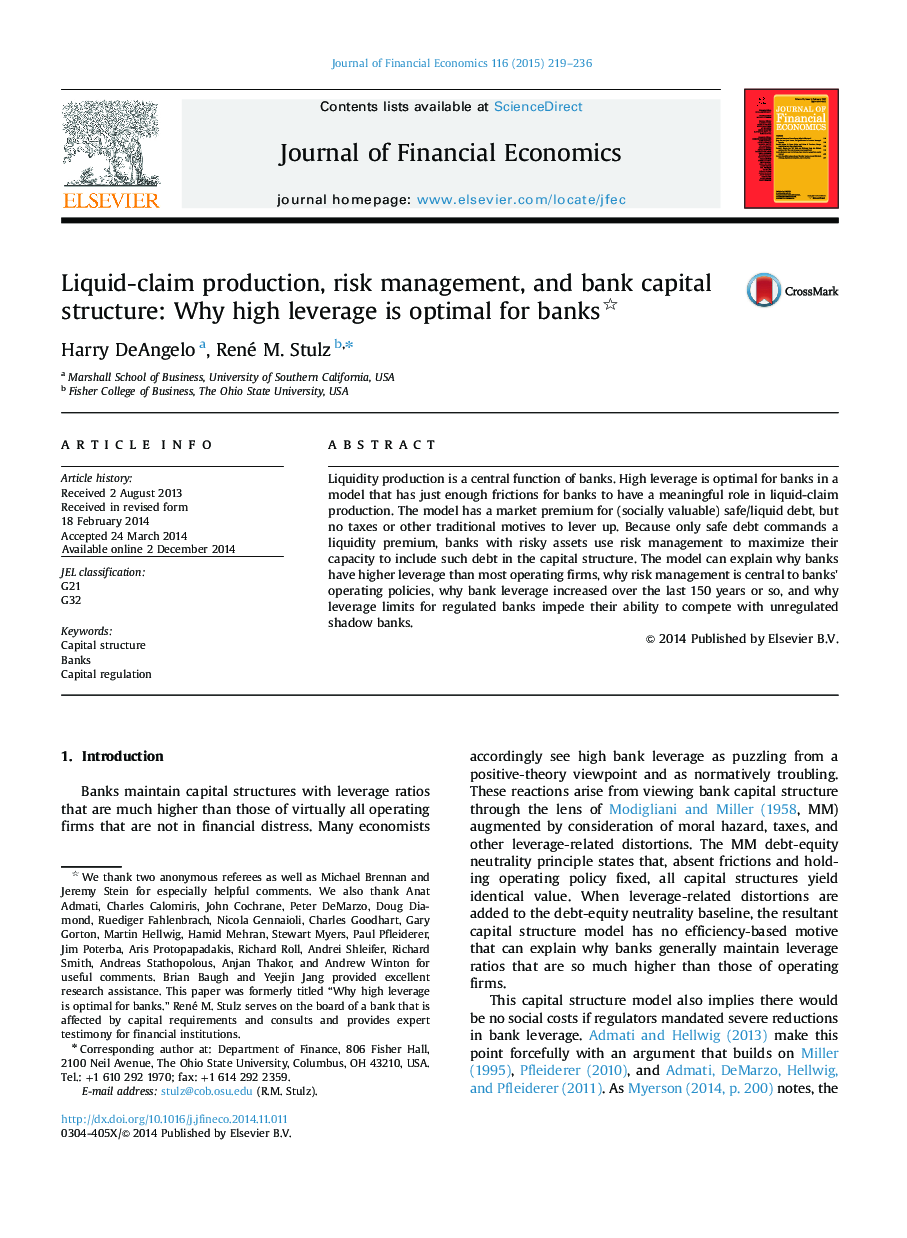| Article ID | Journal | Published Year | Pages | File Type |
|---|---|---|---|---|
| 10475840 | Journal of Financial Economics | 2015 | 18 Pages |
Abstract
Liquidity production is a central function of banks. High leverage is optimal for banks in a model that has just enough frictions for banks to have a meaningful role in liquid-claim production. The model has a market premium for (socially valuable) safe/liquid debt, but no taxes or other traditional motives to lever up. Because only safe debt commands a liquidity premium, banks with risky assets use risk management to maximize their capacity to include such debt in the capital structure. The model can explain why banks have higher leverage than most operating firms, why risk management is central to banks׳ operating policies, why bank leverage increased over the last 150 years or so, and why leverage limits for regulated banks impede their ability to compete with unregulated shadow banks.
Related Topics
Social Sciences and Humanities
Business, Management and Accounting
Accounting
Authors
Harry DeAngelo, René M. Stulz,
